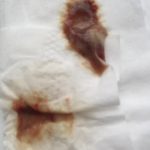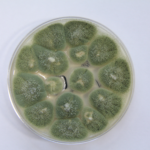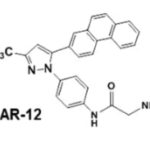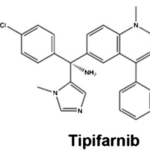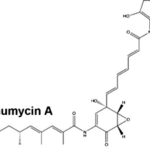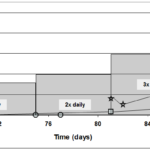Date: 26 November 2013
Secondary metabolites, structure diagram: Trivial name – fumigaclavine C
Copyright: n/a
Notes:
Species: A. fumigatusSystematic name: Ergolin-9-ol, 2-(1,1-dimethyl-2-propenyl)-6,8-dimethyl-, acetate (ester), (8-beta,9-beta)-Molecular formulae: C23H30N2O2Molecular weight: 366.497Chemical abstracts number: 62867-47-4Selected references: COLE RJ ; KIRKSEY JW ; DORNER JW ; WILSON DM ; JOHNSON J C JR ; JOHNSON AN ; BEDELL DM ; SPRINGER JP ; CHEXAL KK ; ET AL. J AGRIC FOOD CHEM; 25 (4). 1977 826-830. Mycotoxins produced by Aspergillus fumigatus species isolated from molded silage.Toxicity: The clavine alkaloids, fumigaclavine A, a new alkaloid designated fumigaclavine C and several tremorgens belonging to the fumitremorgen group were produced by A. fumigatus strains isolated from molded silage. The LD50 of fumigaclavine C was about 150 mg/kg oral dose in day-old cockerels. Calves dosed with crude extracts of A. fumigatus cultures experienced severe diarrhea, irritability and loss of appetite. Postmortem examination showed serous enteritis and evidence of interstitial changes in the lungs; abnormal changes were not found in other tissues.
Images library
-
Title
Legend
-
Images and abstract taken from Mert D et.al., Hematol Rep. 2017 Jun 1;9(2):6997. doi: 10.4081/hr.2017.6997. Invasive Aspergillosis with Disseminated Skin Involvement in a Patient with Acute Myeloid Leukemia: A Rare Case.
Invasive pulmonary aspergillosis is most commonly seen in immunocompromised patients. Besides, skin lesions may also develop due to invasive aspergillosis in those patients. A 49-year-old male patient was diagnosed with acute myeloid leukemia.
The patient developed bullous and zosteriform lesions on the skin after the 21st day of hospitalization. The skin biopsy showed hyphae. Disseminated skin aspergillosis was diagnosed to the patient.
Voricanazole treatment was initiated. The patient was discharged once the lesions started to disappear.
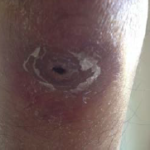 ,
, 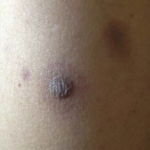 ,
, 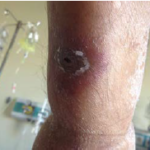 ,
,  ,
, 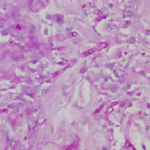
-
A pile of woodchip stored for use in a garden usually as a weed suppressing mulch. The heat building up in the pile is illustrated by the plumes of steam eminating from the top of the pile.
Aspergillus fumigatus is particularly well adapted to grow in the heat (up to 60C) found in such piles of rotting organic material and this characteristic, an adaption for its life in its natural environment also enables it to survive and grow in warm mammalian bodies at 37C. Most fungi cannot grow or survive at those temperatures
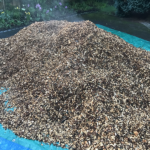 ,
, 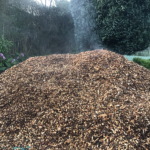 ,
, 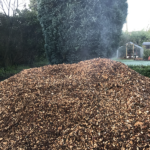 ,
, 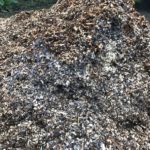
-
MK is 59 years old and presented with right sided pleuritic chest pain and coughing over 1 week. A chest Xray and then CT scan revealed complete collapse of her right lower lobe and middle lobes. Mucous retention is seen just proximal to the abrupt cutoff. There was mild bronchiectasis.
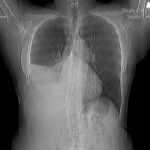 ,
, 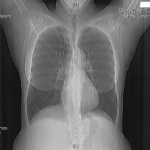

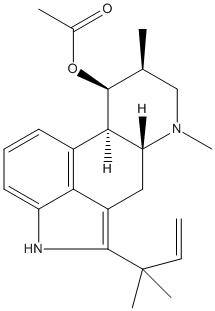

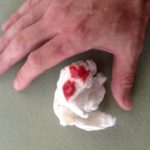 ,
,  ,
, 